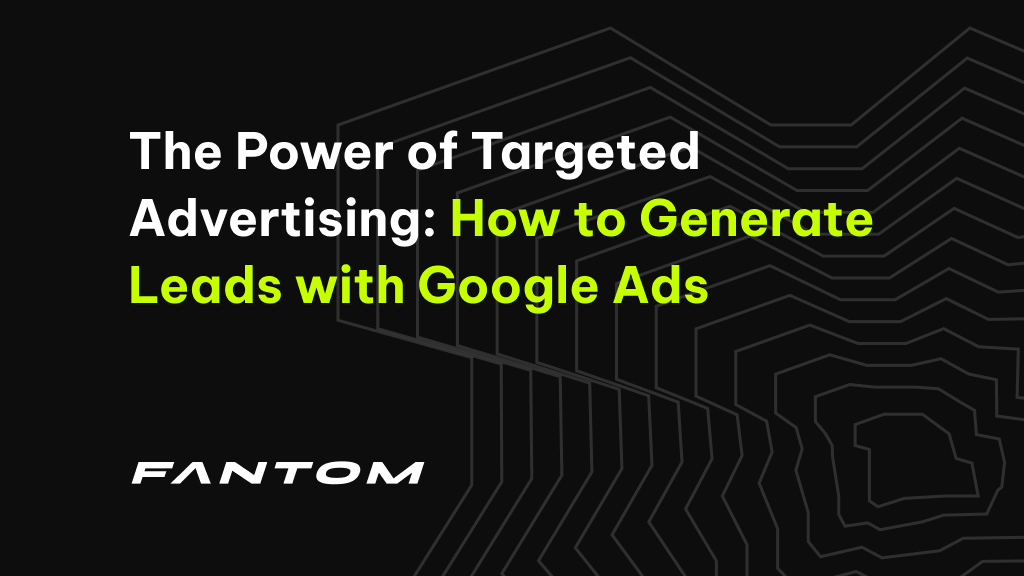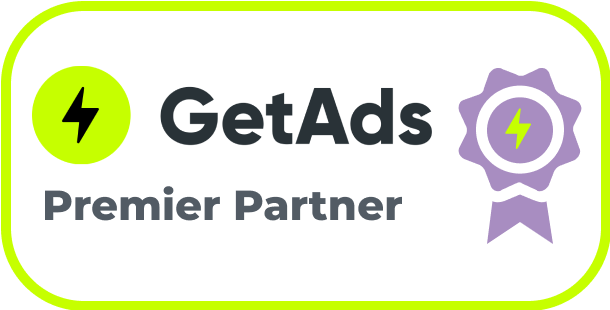Targeted advertising helps businesses to stand out in a sea of other alternatives and competitors. Google Ads is one of the most powerful tools for generating leads and driving conversions through targeted advertising.
With over 246 million unique visitors per month, Google Ads offers a vast platform to reach your target audience. But, using Google Ads effectively requires a deep understanding of the platform and the target audience.
In this blog post, we will discuss the crucial steps businesses need to follow to generate leads with Google Ads.

What is targeted advertising?
Targeted advertising is a form of advertising that allows businesses to show their ads to specific groups of people based on certain criteria. These criteria can include factors such as demographics, interests, location, and behavior.
By targeting their ads to specific groups of people, businesses can increase the effectiveness of their advertising campaigns and maximize their return on investment (ROI), to see some of the results take a look at some of our case studies.
How does Google Ads work?
Google Ads is an online advertising platform allowing businesses to create and run ads on Google’s search engine results pages (SERPs) and other websites that are part of the Google Display Network.
The platform operates on a pay-per-click (PPC) model, where businesses only pay when someone clicks on their ads.
Businesses choose the keywords they want to target and create ads that are served or appear on the SERPs when someone searches for them. They also set a budget for their campaign and bid on the keywords they want to target. When someone clicks on their ad, they pay the bid amount for that click.

How to generate leads with Google Ads?
Now that you understand how Google Ads works at a very high level – let’s look at how you can use it to generate leads for your business.
Choose the Right Keywords
Choosing the right keywords is essential to the success of your Google Ads campaign.
To identify the most relevant and high-volume keywords for your business, you can use various keyword research tools such as Google Keyword Planner and SEMrush.
When choosing keywords, it is crucial to consider the user intent. Are they looking for information, or are they ready to purchase?
By matching the user intent with the right keywords, you can increase the effectiveness of your ads and improve your conversion rates.
Another effective strategy is to use long-tail keywords. These are longer, more specific keyword phrases that are less competitive than shorter, more general ones. By targeting long-tail keywords, you can increase your chances of reaching a highly engaged audience and improve your ROI.
Create Compelling Ads
Creating compelling ads is essential to capturing the attention of your target audience and driving conversions. To create effective ads, you need to focus on the key benefits of your product or service and tailor your messaging to the needs and preferences of your target audience.

One effective strategy is to use emotional appeals in your ad copy. By tapping into the emotions of your target audience, you can create a stronger connection with them and increase the likelihood of conversion. For example, a travel company might use the emotional appeal of “Escape to Paradise” in its ad copy to create a sense of excitement and adventure.
Another important consideration is the use of ad extensions. Ad extensions allow you to include additional information, such as phone numbers or location information, in your ads. By providing more context and details, you can increase the effectiveness of your ads and improve your click-through rates.
Make Your Target Audience Clear
Defining your target audience is a critical first step in any successful advertising campaign. To truly understand your audience, you must go beyond basic demographics such as age and gender. You have to consider factors such as interests, behaviors, and intent.
One effective way to define your target audience is to use data-driven audience segmentation. It involves analyzing data from various sources, such as website analytics and customer relationship management (CRM) systems, to create detailed customer profiles. By understanding the behaviors and preferences of your target audience, you can craft more effective ads that resonate with them.
Another important consideration when defining your target audience is the customer journey.
Think about where your target audience is in the buying process and tailor your ads accordingly.
For example, if someone is just starting to research a product or service, they may be more receptive to educational content such as blog posts or whitepapers. If someone is further along in the buying process – they may be more interested in special offers or, free trials, or setting up a call or demo.

Use Landing Pages to Convert Leads
When someone clicks on your ad, they should be redirected to a landing page; specifically designed to convert them. To create an effective landing page, you must focus on three key elements: relevance, clarity, and simplicity.
Relevance: Your landing page should align with your ad copy and keywords. It helps to ensure that users have a seamless experience and know what they are getting when they click on your ad.
Clarity: Your landing page should be specific and easy to understand. Use a clear and compelling headline, concise copy, and a prominent call to action to guide users toward the desired action.
Simplicity: Your landing page should be simple and easy to navigate. Avoid clutter and distractions, and focus on the essential information and actions you want users to take.
When looking for landing page software consider one that fits your needs and budget as there are many out there to choose from. For our clients, we use Unbounce, which is a great landing page builder with a user-friendly interface, hundreds of templates you can use as inspiration or start from scratch, great pricing, and tons of integrations so you can plug it in with all your other marketing tools easily.
Monitor and Optimize Your Campaign
It’s critical to monitor and optimize your Google Ads campaign regularly. By analyzing data and making adjustments, you can improve the performance of your campaign and maximize your ROI.
One effective way to monitor and optimize your campaign is to use A/B testing. It involves creating two different versions of your ad or landing page and testing them against each other to see which performs better. By testing different variables, such as ad copy, headlines, or images, you can identify the most effective elements and refine your campaign accordingly.
Another important consideration is to track your conversion rates and adjust your bidding strategy accordingly. If you find that some keywords or ads generate a higher conversion rate, you may want to increase your bids to ensure that your ads appear in a prominent position.
It’s also essential to monitor your budget and adjust your spending accordingly. By tracking your cost per click (CPC) and cost per action/conversion (CPA) or cost per lead (CPL), you can ensure that you get the most value for your advertising spend.
Targeted advertising is about connecting with the right people at the right time. By defining your target audience, choosing the right keywords, creating compelling ads, using landing pages to convert leads, and monitoring and optimizing your campaign, you can create an effective advertising campaign that delivers results.
However, the key to success with Google Ads is ongoing optimization. Analyzing data, testing different variables, and adjusting your strategy is essential for maximizing your ROI.
While Google Ads can be a powerful tool, it’s essential to remember that it’s just one piece of the puzzle. A holistic approach to marketing that includes other channels such as social media, email marketing, and content marketing, is necessary for a well-rounded marketing strategy.
In conclusion, businesses must invest time, resources, and expertise in targeted advertising to grow and succeed. Following the steps outlined in this blog post and continually refining your strategy, you can create a successful Google Ads campaign that generates leads and drives conversions.







